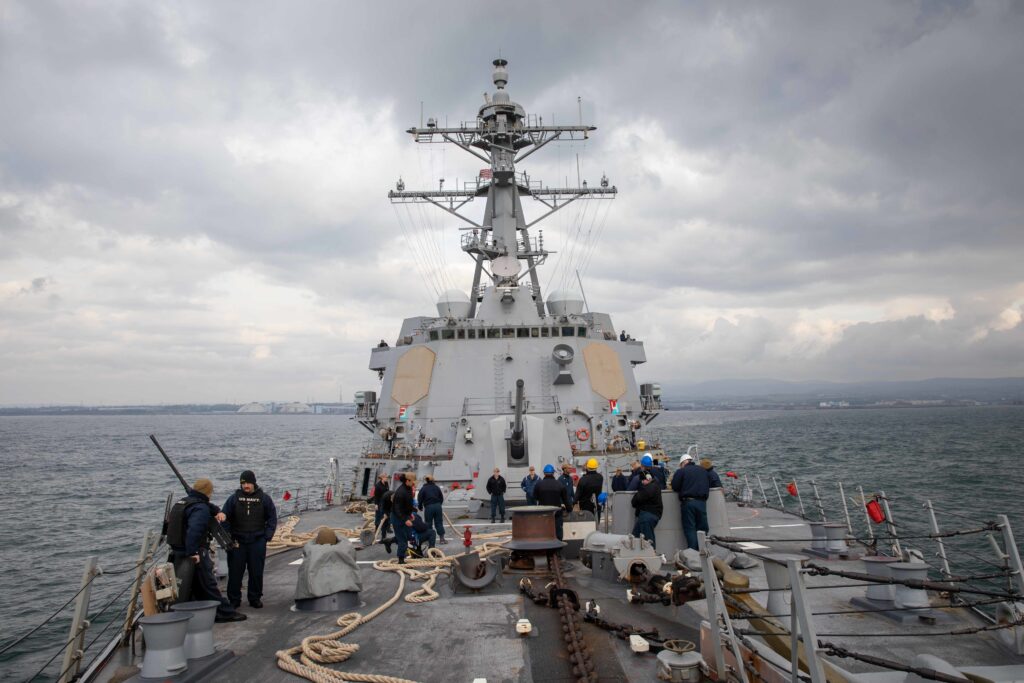
******
ARLINGTON, Va. — The U.S. Navy’s surface combatants need to be able to operate independently but also integrate with a strike group seamlessly, the admiral in charge of setting fleet doctrine said.
The Navy needs “to capitalize on our Navy’s greatest strength: its ability to distribute and concentrate lethal effect, and out timing and tempo,” said Adm. Daryl Caudle, commander, U.S. Fleet Forces Command, speaking Jan. 11 at the annual Surface Navy Association symposium in Arlington.
“This requires our surface combatants to be much more plug and play inherently,” Caudle said. “Our ships should not have to work up together to fight effectively together.”
Caudle said that ‘[f]rom my vantage point, the way we accomplish this is by redesigning the core carrier strike group. In my view of the model, the core strike group would be built on a CVN [aircraft carrier], of course, an air-defense missile ship, and a re-supply oiler. These units matriculate through the core OFRP [Optimized Fleet Response Plan] based on the CVN’s required phases.”
The OFRP is the fleet’s standard ship cycle construct that guides a roughly 36-month readiness roadmap. It is designed to provide the fleet with continuously ready, fully certified warships ready to accomplish a full range of on-demand missions at all times. The ships in a strike group go through maintenance, deploy, and stand ready to surge together.
Deploy Independently, Seamlessly Integrate
“By removing and de-coupling the requirement that all supporting ships are tied to the CVN’s OFRP phase length, I optimize each surface ship based on a more tailored set of requirements allows me in concept to improve the readiness and availability of our surface Navy to deploy and respond,” Caudle said. “Each surface ship would be trained and certified on their pre-determined set of warfare area competencies beyond basic operations, enabling them to deploy independently and plug into a strike group seamlessly at the point of need. In conflict, this is an absolute necessary.”
Caudle said the Navy is re-examining training and deployments to align with what already is happening in the fleet.
“The beauty of this re-designed strike group concept is that it becomes an interchangeable force that can integrate [in a fungible way] into a myriad of environments, with multiple commanders across AORs [areas of responsibility] worldwide,” Caudle said. “This and many other problems and challenges reduce the O [optimized] in the OFRP and are being examined by a cross-functional team led by my fleet readiness officer.”
- BlueHalo to Test C-UAS System on Marine Corps JLTV - April 29, 2024
- USS George Washington Deploys to U.S. Southern Command, Eventually Headed to Japan - April 26, 2024
- SECNAV Advocates Increased Legal Immigration to Increase Shipbuilder Workforce - April 23, 2024



